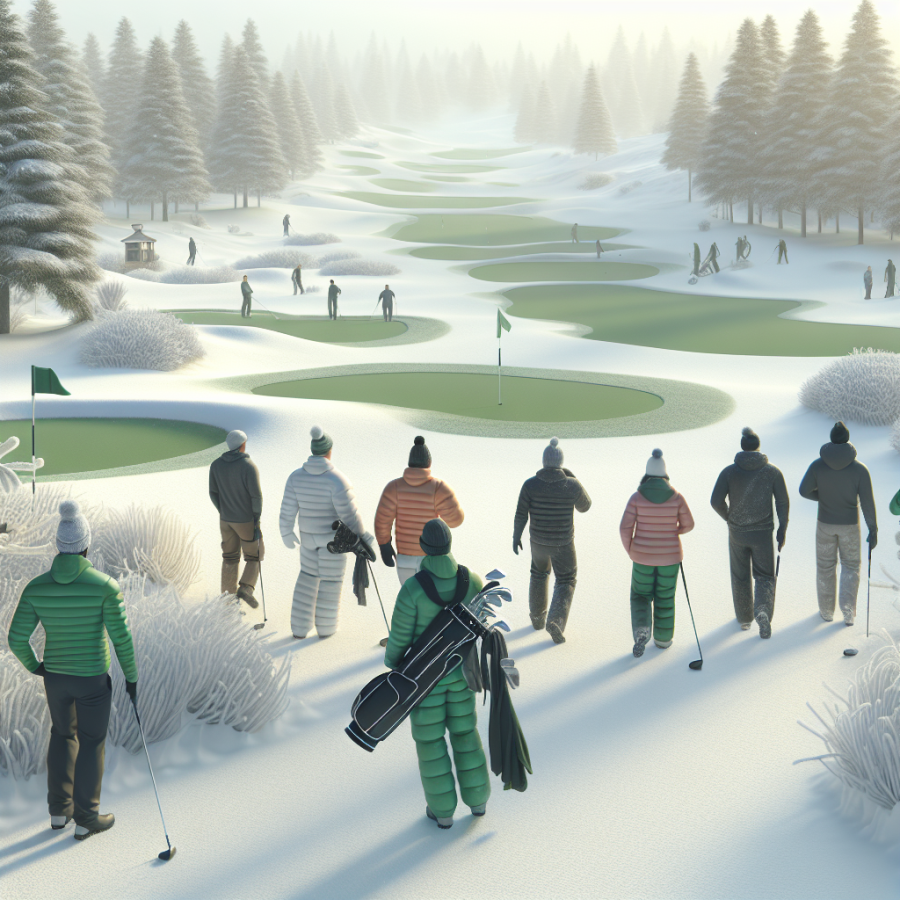Exploring the Possibility of Winter Golfing: Closures and Termination Dates
As we delve into the details of winter golfing, one of the most pertinent questions is about the accessibility of golf courses during the cold season. Sporting enthusiasts and golfers, in particular, may wonder: Are golf courses even open for play when the temperatures plunge, and the ground is covered with a blanket of snow?
Many of us associate golf with blue skies, sunshine, and lush green courses, but the concept of golfing in winter is gaining traction. The surprising truth is that several golf courses remain operational during winter, only with specific accommodations and guidelines. These adjustments are undertaken to provide for the exciting variant of the game known as winter golfing, while also ensuring the preservation and maintenance of the courses.
Typically, golf courses in regions with a significant drop in winter temperatures do experience closures or limited operation hours. The primary reason behind this is to prevent damage to the grass on the fairways and greens. Heavy traffic on a frost-covered fairway can break the grass blades and result in large unsightly patches when the course thaws out. Therefore, for those living in harsh winter climates, checking course availability becomes essential.
However, the closure is not always the norm. Some golf courses adopt alternate methods that make them stay open even in cold weather conditions. For instance, they might switch to temporary greens during the winter to protect the main ones. Besides, they may also use bright colored golf balls and flags for better visibility against the snow. These adaptations ensure that golfers can continue pursuing their passion without causing extensive damage to the course.
What’s essential to keep in mind is the variability of the winter termination dates. The closing and opening of courses depend heavily on changing weather patterns and geographic locations. Northern courses usually shut down around late fall and reopen in the spring, while courses in milder climates may remain open year-round, possibly with reduced hours.
Keeping up with the schedule of the golf course in your area is crucial because these termination dates are often flexible and contingent on weather conditions. For instance, a mild winter may push the dates back, keeping golf courses open for longer, while an early onset of severe frost may necessitate early termination.
In conclusion, the possibility of winter golfing is certainly not ruled out. Golf courses continue to embrace the winter season with creativity, ensuring enthusiasts can relish a different, snow-filled version of this beloved sport.
Read also:
Determining the Value: How Much Does a Soccer Ball Cost?"
Tips and Precautions for Playing Golf in the Chilly Winter Season
Playing golf in the cold winter season can be a unique and enjoyable experience, provided the right precautions are taken. Here are some tips that might facilitate your golfing experience in the chill.
1. Dress Appropriately: Layer your clothing suitably to stay warm without impeding your swing. Start with a moisture-controlled wicking layer to keep you dry, and gradually add thermal layers. Opt for a good-quality winter golf glove for better grip, as cold can affect your hands’ performance. Lightweight winter hats, scarves, and thermal socks are also recommended.
2. Use the Right Golf Ball: Cold temperatures significantly impact the ball’s performance. Choose a lower compression golf ball for better play in winter as they are easier to compress leading to improved distance.
3. Stay Flexible: Lower temperatures can make muscles stiff, which may affect your swing. So, remember to stretch extensively prior to your game. Also, consider arriving at the golf course a little early to allow extra time for a more comprehensive warm-up.
4. Adapt Your Swing: Cold weather affects the golf course conditions and in turn, your ball’s trajectory. Given that cold air is denser, it can reduce the ball’s flight distance. So, you might need to club up. Work on striking down and through the ball to keep it lower and minimize its exposure to the chill air.
5. Stay Hydrated: Surprisingly, your body can get dehydrated in cold weather as well. Ensure that you drink enough fluids, preferably warm, throughout your game.
6. Protect Your Gear: Cold and damp conditions can harm your golfing equipment. Use waterproof golf bags and regularly clean and dry your clubs to prevent rusting. Also, consider using hand warmers to keep your balls warm and check if your golf shoes are spiked appropriately for icy conditions.
7. Watch Out for Weather Conditions: Keep a close eye on the weather forecast before planning your game. Bad weather like heavy snow, extreme cold, or icy rains can be harmful and hazardous.
8. Winter Golf Rules: Familiarize yourself with the specific rules for winter golf. Some courses implement different rules such as lifting, cleaning, and placing the ball in the fairway, and others may use temporary greens.
By taking these precautions, one can enjoy their favorite sport even when the temperatures dip. Remember, the key to successful winter golfing lies in staying warm, staying flexible, and making the necessary adjustments to your gear and game.




